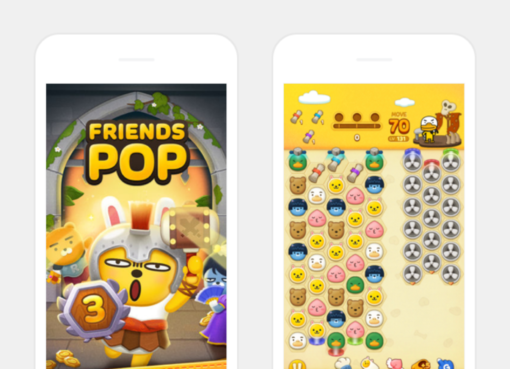Bidding for digital artist Beeple’s non-fungible token (NFT)-based artwork — the first purely digital artwork to be sold by a major fine arts auction house — starts today on Christie’s online platform.
The artwork titled “Everydays: The First 5000 Days” is a collage of 5,000 images Beeple created over 5,000 consecutive days since May 1, 2007. In another first, Christie’s has also announced that it will accept ether (ETH) — the native token of the Ethereum blockchain — as a payment option for the sale.
Beeple is among a still-small but increasing number of artists who are using blockchain-powered NFTs to showcase and sell their artworks. As a unique, non-interchangeable (non-fungible) digital asset whose authenticity and true ownership is tracked on a blockchain, NFTs are now not only proliferating in the art world but also a growing part of the collectibles, fashion, gaming, sport and music sectors.
See related article: LUKSO’s Fabian Vogelsteller predicts NFT and ERC-20 uses will grow
The NFT market tripled in size in 2020, increasing 299% year-on-year to more than US$250 million, according to NonFungible.com, a data company that tracks NFTs and NFT marketplaces on the Ethereum blockchain.
“The whole NFT space is going to do over a billion dollars. It’s like 3X, 4X growth year over year,” said Zach Burks, founder of NFT marketplace Mintable, in an interview with Forkast.News. “Everyone’s going to know NFTs, everyone’s going to have some form of interaction with NFTs. 2021 is going to be the year for NFTs.”
Christie’s is proud to offer “Everydays – The First 5000 Days” by @beeple as the first purely digital work of art ever offered by a major auction house. Bidding will be open from Feb 25-Mar 11.
Learn more here https://t.co/srx95HCE0o | NFT issued in partnership w/ @makersplaceco pic.twitter.com/zymq2DSjy7
— Christie’s (@ChristiesInc) February 16, 2021
Growth of crypto art
Despite being a new niche sector, the crypto art market has already rung up over US$138 million in sales, with more than 82,000 artworks sold, according to data from CryptoArt.io. Beeple and Pak — a person of mystery sometimes described as the “Satoshi of crypto art” — are two top-selling NFT artists, with Beeple’s 824 sold artworks valued at a combined US$20 million, and Pak’s 1,643 sold artworks valued at a combined US$7 million according to CryptoArt.io.
In contrast, the global art market was valued at an estimated US$64.1 billion in 2019, according to The Art Basel and UBS Global Art Market report 2020.
The traditional art world has been hard hit by the Covid-19 pandemic, with museums, galleries and exhibitions either shut down or facing plummeting business. To adapt to the current socially-distanced reality, art creators and sellers are increasingly going digital and turning to technologies such as blockchain and NFTs.
“We have a lot of confidence in the future of this market, and we are very much looking forward to both observing how our established collecting base responds, and welcoming the NFT community to Christie’s,” Noah Davis, a post-war and contemporary art specialist at Christie’s, told Forkast.News in an email. At Christie’s, online sales reached US$270 million in 2019, growing for a third year despite declines in overall sales.
Beeple, who lives in Wisconsin, drives a Toyota and is named Mike Winkelmann in the offline world, has more than 1.8 million followers on Instagram and is currently the highest grossing blockchain-based digital artist. Best known for his surreal images with political overtones, Beeple made headlines last December after selling a collection of NFT artworks for over US$3.5 million that included the sale of a single edition work for US$777,777.77 on Nifty Gateway, an NFT marketplace. The upcoming sale by Christie’s, a top-tier auction house, is in partnership with blockchain-backed art marketplace MakersPlace.
“This is a market that has seen a rapid ascent over the last few years — especially the last few months — quickly establishing itself as an imposing, global presence,” Davis said. “This is Christie’s first time offering a purely virtual NFT to the global auction marketplace.”
Christie’s may be the first in the rarified fine art scene to offer NFTs, but in the online world, it already faces competition. There are now at least 27 unique digital art marketplaces on Ethereum, with SuperRare, MakersPlace, Async Art, and Known Origin facilitating between US$1 to US$8 million in sales since they launched, according to ConsenSys Codefi’s Q4 2020 Ethereum DeFi report.
NFT ecosystem beyond art
The NFT industry constitutes a very small part of the overall crypto industry — NFT versus BTC and ETH market capitalizations in 2020 were 0.17% and 1.01% respectively, according to the 2020 non-fungible tokens yearly report by NonFungible.com.
But the NFT ecosystem is growing, and fast. The report stated that active wallets — wallets that interacted with NFT smart contracts — grew by 97% from 112,731 active wallets in 2019 to 222, 179 in 2020. The number of buyers rose 66.9% to 74,529 and the number of sellers increased by 24.7% to 31,504.
In terms of market distribution, the report indicated that metaverses — or virtual worlds such as Decentraland, The Sandbox and Cryptovoxels — were dominant, followed by art, gaming, sport and collectibles.
From a trading perspective, gaming takes up the lion’s share, accounting for nearly 47% of trades, followed by collectibles (27%). Art accounted for just 5%. The secondary, or resale market for crypto art remains very limited, an indicator that most buyers are focused on collecting for now.
Most NFTs are created (or “minted”) on the Ethereum blockchain and are classified as ERC-721 as opposed to ERC-20, the Ethereum fungible token protocol. The NFTs can be traded on marketplaces such as OpenSea, Rariable and Mintable. Other blockchains for NFT minting include Enjin, FLOW by Dapper Labs and WAX.
Digital collectibles going mainstream
Sales of crypto collectibles amounted to over US$322 million over just the last 30 days according to data from CryptoSlam, which tracks blockchain collectibles.
Last week, CryptoPunk #6965— one of the 10,000 24×24 pixel art images of unique collectible characters with proof of ownership stored on the Ethereum blockchain — was sold for 800 ETH (over US$1.5 million).
Punk 6965 bought for 800 ETH ($1,540,063.96 USD) by 0x99b57c from 0x03911f. https://t.co/HbYoxRlnta #cryptopunks #ethereum pic.twitter.com/FtBfxQDvHj
— CryptoPunks Bot (@cryptopunksbot) February 19, 2021
And NFTs are getting more mainstream. NBA Top Shot, a blockchain-based platform that enables fans to buy, sell or trade officially-licensed NBA video highlights (or “Moments”) as digital collectibles — think of it as digital trading cards — took top spot in the NFT sector last month, according to DappRadar’s Dapp Industry Report for January 2021.
Since NBA Top Shot’s public beta launch on the Flow blockchain last October by Dapper Labs — the firm behind popular blockchain-based collectible projects CryptoKitties, the project has had over US$147 million in sales in the past 7 days, with some “Moments” selling for more than US$1000. Earlier this week, a single NFT of LeBron James sold for US$208,000.
In comparison, CryptoPunks, the very first NFT collection built on blockchain, took three years to reach sales of more than US$100,000, according to DappRadar’s report.
Top Legendary Moment Sales (January)
1. LeBron James Block, 1/59 (FTT Series 1 set): $100K
Collector spicy_seal29342. Zion Williamson Block, 1/50 (Holo MMXX Series 1 set): $100K
Collector jerlevine3. LeBron James Block, 23/59 (FTT Series 1 set): $78K
Collector vegasfinds777 pic.twitter.com/IjXNj3YxWi— NBA Top Shot (@nba_topshot) February 5, 2021
NBA Top Shots could be a game-changer for sports collecting and NFTs. The project appeals to a wide NBA fan base, and has made it easy for fans to purchase the NFTs with their credit cards, without the need to understand the underlying blockchain technology.
“You can come with credit card. You can come with Bitcoin. You can come with any currency you want to come with. But every transaction is being powered by the Flow blockchain. Every asset is being authenticated and secured by the Flow blockchain,” said Dapper Labs CEO Roham Gharegozlou in an interview with Yahoo Finance. “You don’t need to know that in order to play NBA Top Shot. There’s nothing about cryptocurrency. It’s about basketball. And the crypto technology is simply what enables the software to exist.”
Yat Siu, co-founder and chairman of gaming company Animoca Brands which published CryptoKitties in China and games portfolio includes The Sandbox and F1® Delta Time told Forkast.News in an interview that “they’ve demonstrated that there is demand with these digital assets, not just some crazy crypto guys, but basically mainstream demand is possible. And now it’s really a race of brands to bring these collectibles.”
The future of gaming
Earlier this month, nine plots of land in the blockchain game Axie Infinity were sold for 888.25 ETH (US$$1.5 million), in the biggest NFT sale ever to date. The anonymous buyer, who goes by the Twitter handle Flying Falcon (@Its_Falcon_Time) tweeted, “We’re witnessing a historic moment; the rise of digital nations with their own systems of clearly delineated, irrevocable property rights. Axie land has entertainment value, social value, and economic value in the form of future resource flows.”
“Axie Land is the upcoming metaverse release. Soon players can use Axie Infinity art assets to create their own games and experiences. Festivals, concerts, sporting events. The land is the bridge. The opportunities are endless,” Flying Falcon tweeted.
Similarly, Metapurse, a crypto-based fund and NFT production studio, acquired virtual land in the Cryptovoxels, Somnium Space and Decentraland metaverses. Metapurse was behind the acquisition of 20 artworks from Beeple’s Everydays: The 2020 Collection for over US$2.2 million in December. Last month, it announced the launch of a NFT token bundle called B.20 which allows people to view and own a share of the recently acquired Beeple NFT artworks together with four custom VR museums built in the metaverses.
Over 500+ man hours went into creating the immersive B.20 museums across @Cryptovoxels, @SomniumSpace, @Decentraland, and @TheSandboxGame.
The drama. The craftsmanship, the art of @VoxelArchitects. Here’s a look at it all. https://t.co/HEbkdYJd6I pic.twitter.com/9eRmpqNwTp
— Metapurse.eth (@metapurse) January 21, 2021
Calling Metapurse’s B.20 initiative a “great community experiment around ownership,” Siu said they were “leading the way of showing how artists and creators can generate more value, but also have more distributed ownership.”
Siu, a longtime advocate of blockchain and play-to-earn as the future of gaming, thinks “future work actually involves us spending time in these virtual worlds” and that NFTs are a representation of “true ownership” of digital property.
The value of NFTs has also appreciated with decentralized finance (DeFi), Siu said. “You can get loans on NFTs, you can fractionalize them, you can lend them.”
See related article: Are blockchain game voxels the new square foot?
But given the high prices, are we seeing a speculative bubble for NFTs?
“It’s definitely not a speculative bubble, because when you are dealing with NFTs, you’re dealing with individual assets. So when you look at bitcoin, you might be able to make a case for saying it’s a bubble because it’s one commodity or asset that is being traded globally with millions of different players involved,” said Mintable’s Burks. “People are valuing whatever the asset is for a premium, they see the value in it.”
According to Siu, the majority of people who buy NFTs do so to hold, unlike people who buy tokens for speculation. “The point is that people don’t have a strong utility for the token, so it is really for speculation. But in the case of non-fungible tokens, that’s different because a non-fungible token is by its nature, not very liquid,” he said.
NFT buyers “are not thinking, wow, I can sell this tomorrow and flip it,” he said. “The pride of owning it is greater than the pride in the fact that you made money.”
Ownership is a key aspect of blockchain games, and game stickiness is high at 70% to 80% according to Siu. But the lack of stickiness and high drop-out rates are a problem for free-to-play (F2P) games that are still a big part of Animoca Brands’ income.
📣 CDH & CK Tokens
Animoca Brands is experimenting methods to blend blockchain technology in traditional free-to-play games with two of its mobile titles – Crazy Kings and Crazy Defense Heroes.
For more details, please visit https://t.co/q3EwtbydQ6 and https://t.co/SFlyr11iKe pic.twitter.com/f92PcnNB04
— Crazy Defense Heroes (@CrazyDefenseEN) February 17, 2021
The future of gaming, Siu says, is one where “games exist for digital assets” — unlike today where assets support the games. “A successful game in the non-fungible token world means that the game design has to be built around creating value for the asset you own, which mimics the real world.” And he believes that ultimately these assets will flow and transfer across chains.
Challenges remain
Despite the massive growth of NFTs, it is still early in the game and challenges remain. NFTs are early in the adoption cycle relative to the over 100 million people who own cryptocurrencies worldwide. The industry still faces challenges such as scalability and volatility of transaction fees.
As Ethereum struggles with scalability limitations, sidechains or layer-2 solutions have come to the fore. Aavegotchi, an Aave-backed project inspired by the Tamagotchi game that combines DeFi, gaming and NFT, will be launching on Polygon (previously called Matic Network), a protocol for building and connecting Ethereum-compatible blockchain networks.
NFT marketplace Mintable, which launched last December, has also tried to address the issue of high gas cost by creating a gasless minting feature which removes the friction of needing to pay to create an NFT.
Reactions to the rise of NFTs have been mixed. “Now that NFTs are getting a bit of traction, it’s interesting to see how people are reacting. I think it has all the makings of something with huge viral potential. Why? Because it’s polarizing. Some people love the idea, some people think it’s dumb,” tweeted recording artist André Allen Anjos who is better known as RAC.
NFTs driving a new model of content ownership
As more visual artists create and try to monetize their work through NFTs, so have musicians, celebrities, and other content creators. The pandemic has restricted performances and tours, and NFTs present a new opportunity for income and engaging with fans.
“In media, NFTs — or Non-Fungible Tokens — make it possible for creators to retain ownership of their content, without limiting the propagation of their files across the internet. As a result, NFTs have the potential to invert the ownership model of media — offering creators, their audiences, and developers who build for them, a viable alternative to platform-driven monetization,” wrote Variant Fund founder Jesse Walden on Mirror, a publishing platform built on a decentralized, user-owned, crypto-based network.
Billionaire entrepreneur Mark Cuban who sold five digital collectibles on Mintable last month and has since gone on to release more, wrote in a blog post that blockchain driven assets have now legitimately become stores of value.
Smart contracts allowed for “what I think [is] possibly the ultimate game changer, whether or not future sales pay a percentage of every sale to the person/company who originally minted the digital good,” he wrote. According to the Mintable site listing the five NFTs, Cuban will earn 15% royalty on secondary sales.
Only 3 “MavsSunsGameDayExperience” left by Mark Cuban.
Infinite objects have been ordered with 2 of these already!
Get this one in a lifetime NFT and display it in your house. https://t.co/DRCGg7hro1 pic.twitter.com/LfAX5CBPPg
— Mintable (@mintable_app) January 31, 2021
Earlier this month, rock band LinkinPark’s songwriter and rapper Mike Shinoda sold his first NFT artwork titled “One Hundredth Stream” on Zora, a universal media registry protocol. Shinoda donated the proceeds of US$30,000 from the auction to an ArtCenter scholarship he is funding.
Will NFTs gain traction beyond the blockchain savvy? There’s still some way to mass adoption. And that will take time and education.
Shinoda’s followers needed some help to understand NFTs and Shinoda took to Twitter to explain the concept, “The #NFT I posted will be (must be, by design) 1 of 1. What you own: the file (art?) I uploaded on the http://zora.co platform. I can’t upload that file again. You don’t own the “song” or “master” or “copyright,” but you own the file.”
The #NFT I posted will be (must be, by design) 1 of 1. What you own: the file (art?) I uploaded on the https://t.co/I1HCu0gdvk platform. I can’t upload that file again. You don’t own the “song” or “master” or “copyright,” but you own the file. For example,
(1/4) https://t.co/48DLW9dt0q— Mike Shinoda (@mikeshinoda) February 6, 2021
“Here’s the crazy thing. Even if I upload the full version of the contained song to DSPs [Digital Service Provider] worldwide (which I can still do), I would never get even close to $10K, after fees by DSPs, label, marketing, etc.,” Shinoda tweeted. “And reminder: the NFT isn’t the song—it’s an NFT containing the song. You can even rip the audio and video. And if the contained song becomes more popular, then arguably the NFT becomes more valuable.”
“It doesn’t matter if you think a current bidding price is too high for a digital collectible,” he added. “It matters that one person thinks the price is worth it.”
And while Mintable’s Burks is happy to see big names getting involved in the NFT space, he says he gets more excited if he sees a new artist entering the NFT marketplace and selling a work US$10,000 dollars.
“Then I’m like, wow, that’s like good money, life-changing money for someone,” Burks said. “And they can just earn that from their creation, their content, which is great.”
“The beauty of NFTs is that they inherently are interoperable. You can use them pretty much anywhere in any kind of capacity,” Burks said. “We’re just going to see a lot of new unique things and more larger brands and people get in the space.”




